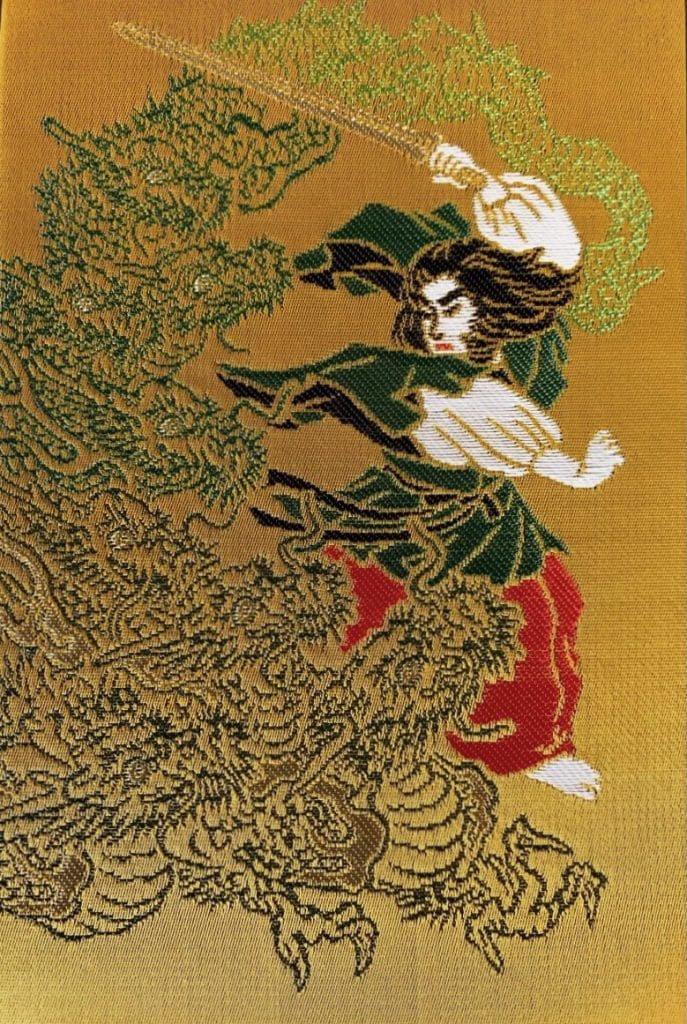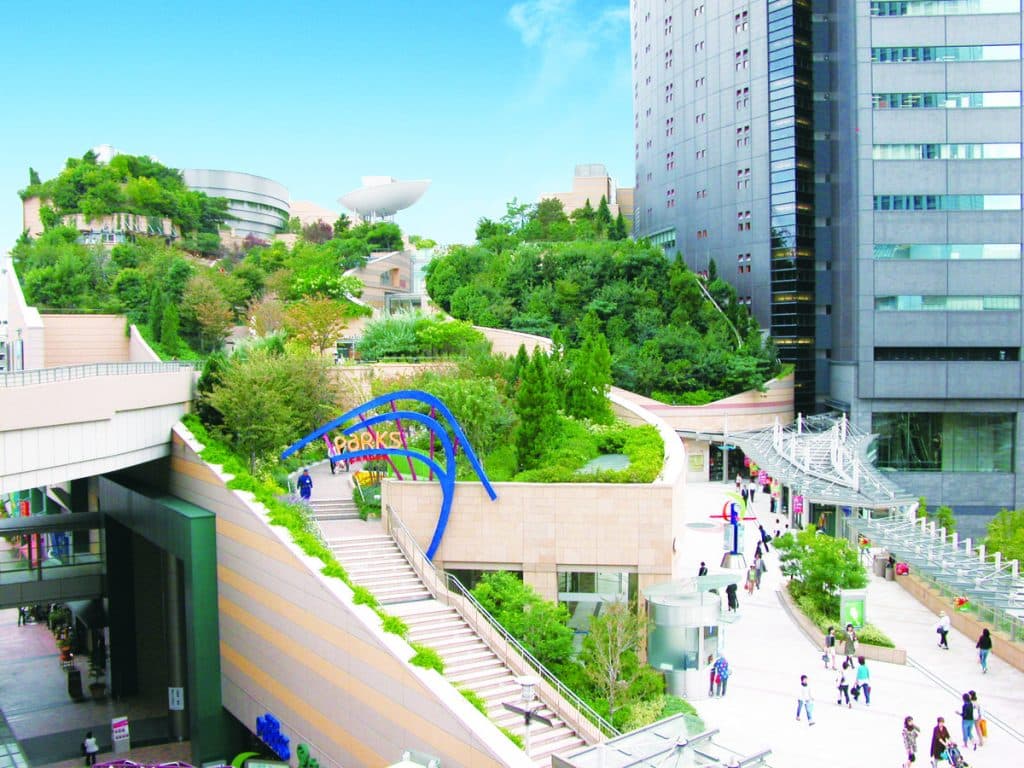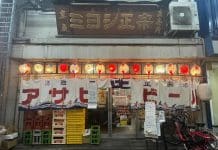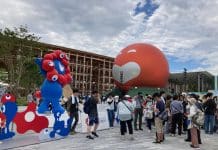If there’s one thing you’ll never be short of in Japan, it’s shrines to visit. With Shinto as the nation’s main religion of choice, a great many annual events and lifetime milestones for the people of Osaka involve a trip to one of these sacred sites.

However, few shrines in Osaka, or indeed across all Japan offer the unique blend of historical significance and quirky charm that you’ll find at Namba Yasaka Shrine.
So, join us today as we take a closer look at this often missed but, for those fortunate enough to visit, never forgotten, cultural heritage site at the heart of central Osaka.
The History of Namba Yasaka Shrine
The earliest mention of Namba Yasaka Shrine in historical records dates back to the year 1069. This makes it one of the oldest Shrine sites of its kind in all of Japan. Unfortunately, like many of Osaka’s great cultural assets and historic monuments, the original shrine was utterly destroyed during the carpet bombing of Osaka during World War II.

It’s current layout, which is based upon the design of the original temple as closely as modern construction techniques and building protocols will allow, dates from 1974.
Unique Features of Namba Yasaka Shrine
The first thing most visitors to Namba Yasaka Shrine will notice is the huge, main building, in the shape of stylized Japanese lion’s head. To enter the building, you literally have to step inside the mouth of the beast itself!
At first this may seem a bit gaudy, perhaps even tacky to some tourists, especially compared to the understated splendor of other Osaka religious sites like Sumiyoshi Taisha or Shitennoji Temple.
However, once you understand the context, it all makes a lot more sense. You’ll soon realize this is no flashy tourist trap. This structure, though strange to the uninitiated, actually carries deep cultural and historical resonance for the people of Osaka, and observers of the Shinto religion in general.

So, what is the reason for this, almost carnival like, Lion head shaped entrance?
Well, it’s pretty simple really. The lion is a guardian, who devours evil spirits. So basically, once you set foot inside its gaping maw, it will draw out and consume any evil or otherwise negative energy that is within you. As you leave, after having offered prayers and the usual, small coinage donation, you once again exit through the lion’s mouth. So, in effect the lion takes you in, chews all out all the bad parts, then (metaphorically speaking) spits out a new, and revitalized you into the world.
Now this is the kind of spiritual cleansing even someone as adverse to organized religion as myself can get right behind!
Which Deities are Honored at Namba Yasaka Shrine?
The main Japanese “kami” (god or demi-god) honored at Namba Yasaka Shrine is Gozu Tenno.
This deity protects against plagues, epidemics and general ill-health.
It’ll come as no surprise that a great many people in Osaka saught comfort from this shrine during the global pandemic a few years ago.

Although a Shinto God, like many aspects of Japan’s national religion, Gozu Tenno is an imported concept from the traditional Buddhism of ancient China and India.
There is one other Japanese Kami honored specifically at Namba Yasaka Shrine, one with a unique and long-standing connection to Gozu Tenno.
That deity is Susanoo No Mikoto.
Who is Susanoo No Mikoto?
Susanoo No Mikoto is a figure in traditional Japanese Mythology, identified as a storm god. Depending on how one interprets the ancient texts, some imply that Gozu Tenno and Susanoo No Mikoto are one and the same, others imply they may be blood relatives.

The confusion here dates from the Meiji Period, when the Japanese government implemented a new code of law known as “Shinbutsu Bunri”. This mandated that Shinto Shrines and Buddhist Temples, previously amalgamated, had to run as separate establishments.
Since then, the official name in Shinto for the Kami enshrined at Namba Yasaka Shrine has been Susanoo No Mikoto.
Susanoo No Mikoto is, according to traditional mythology one of the siblings of Amaterasu, the Sun God that created Japan. Amaterasu often appears in the form of a three-legged crow, as depicted in the emblem of Japan’s national soccer team.
Popular Festivals at Namba Yasaka Shrine
Perhaps not surprisingly, given the “lore dump” you’ve just read through, the best-known festival at Namba Yasaka Shrine is, indeed the one named in honor of the aforementioned Susanoo No Mikoto.
The Susanoo No Mikoto Festival takes place every year on the 3rd Sunday of January.
The centerpiece of the festivities is the “Tsunahiki Jinja” ritual. This is basically a tug of war competition. It serves as a reenactment of Susanoo No Mikoto’s slaying of an eight-headed serpent called Yamata-No-Orochi.

If you look at classical depictions of Yamata-No-Orochi, you may feel like you’ve seen something similar before. The serpent’s appearance in a number of classical artworks is said to be one of the major inspirations behind the infamous King Ghidora, arch-nemesis of Japan’s favorite Kaiju monster, Godzilla.
This festival has been a fixture in local culture for centuries. Although the official records only date back to the Edo Period, local legends place the festivals origins in the 11th century, right alongside the original construction of the Shrine itself.
New Year at Namba Yasaka Shrine
Like many popular shrines across Japan, especially those said to confer good luck and prosperity on those who offer prayer there, Namba Yasaka Shrine gets a lot of football immediately after new year. In the early hours of January 1st and indeed throughout the entire duration of the new year holiday period, the shrine can be very crowded, and you can expect long waiting times to enter the main Lion Head shrine.

Honestly, if you can I would avoid visiting the shrine at this time. Like most religious sites across the world, Namba Yasaka Shrine is best enjoyed with a bit of peace and quiet and as few tour groups as possible.
Who Visits Namba Yasaka Shrine?
Like many shrines in the Shinto religion, Namba Yasaka Shrine does serve a specific purpose at specific times for faithful followers.
Of course, given its link to Gozu Tenno, the god that guards against epidemics and illness, people who have chronic illness, or have loved ones going through such a tough time may go there to pray for some help from above.

However, the Lion-headed shrine, as I mentioned earlier, is also said to have the power to cleanse evil, negative spirits from your soul, as well as any lingering run of bad luck.
So, likewise, people who seek good fortune in the months or years ahead will often make a visit to the shrine in the spring time. Students soon to take high school or university entrance exams, (usually in February or March) may go to Namba Yasaka Shrine a day or two before their big test to pray for good luck.
Indeed, those same people may return again a couple of years later, to again pray for good fortune ahead of graduating and beginning their first full-time jobs in the April intake of fresh graduates.
However, this shrine’s unique qualities and it’s alleged spiritual power are not confined any specific season. So, I say go there whenever you have the chance to do so!
Where is Namba Yasaka Shrine?
Despite being a very tranquil, peaceful place, Namba Yasaka Shrine is but mere minutes from one of Osaka’s biggest shopping and business districts. Situated in Namba, in the city’s Chuo Ward, Namba Yasaka shrine is about 5 minutes’ walk from the renowned Namba Parks Shopping and Entertainment Complex.

As such, it also easily reachable by train. It takes about 5-10 minutes to get there on foot from either JR Namba Station or The Osaka Metro Namba Subway Station.
The quickest way to get there is to head southeast after exiting JR Namba Station via the South Exit. There are numerous signs showing the way to the Namba Yasaka Shrine. You’ll arrive there within about 5 minutes.

How About Admission Cost and Opening Times?
Namba Yasaka Shrine is open daily from 6:30 am until 5pm. As with all Shrines in Japan, regular admission is free. However, it is customary to offer a few coins to the shrine as part of the prayer ritual.
You can also buy charms, and other souvenir blessings from the onsite shop.
Please note though that the Shrine is, on occasion, used for wedding ceremonies. On such days, parts of the Shrine may be closed to the general public for a period of time.

Japanese wedding ceremonies are usually over fairly quickly though, so you could probably go away, have a coffee, and by the time you come back the whole complex will be open again.
What Can I do After Visiting Namba Yasaka Shrine?
The shrine complex itself is relatively small, so, you’re unlikely to spend much more than 40 minutes to one hour there. However, given its central location there’s plenty do both before and after your visit. The nearby Namba Parks complex offers excellent lunch and dinner options, as well as high quality shopping and a cinema. I especially recommend an afternoon tea or coffee at one of the cafes and restaurants within the complex’s rooftop garden. In summer, it’s a nice place to relax, and in winter you can enjoy the festive illuminations.

A short walk from here, you’ll also find the main Namba/Shinsaibashi entertainment district, accented by the Dotonbori canal which runs through the heart of the area. This is one of Osaka’s most iconic hotspots for shopping and entertainment. It’s also nice just to take a walk along the waterfront on a clear evening and enjoy the ambiance.
Conclusion
It might not be the top of page one of any Osaka tourism guide book, but Namba Yasaka Shrine is an official, local cultural asset (designated in 2001) for a very valid reason.

This isn’t just a shrine with a cute, if slightly scary lion façade. This is a piece of living history. The structures there today may not have been around that long, but the historical footprint of this site, and the spirits of all the generations of people who have graced its grounds over the centuries give Namba Yasaka Shrine a uniquely spiritual and soulful feel to it.
It is without doubt, a place you must experience at least once, when you visit Osaka.





















